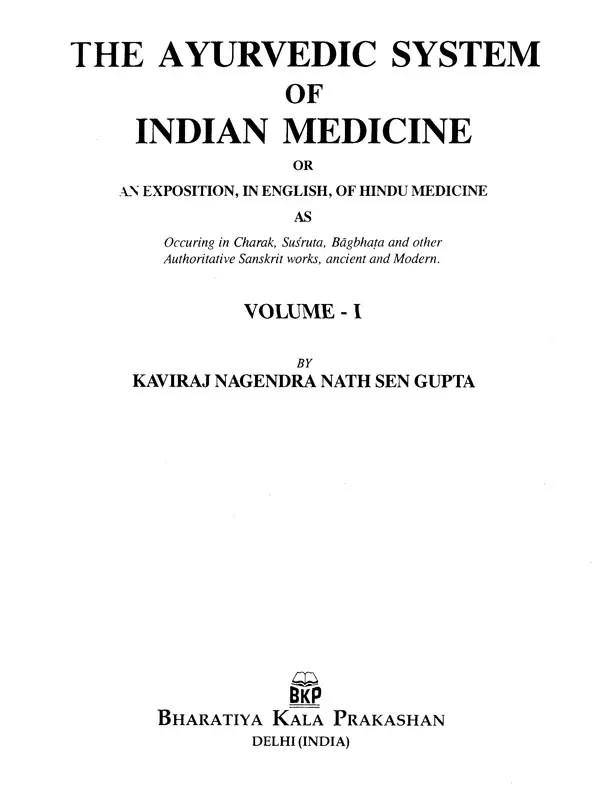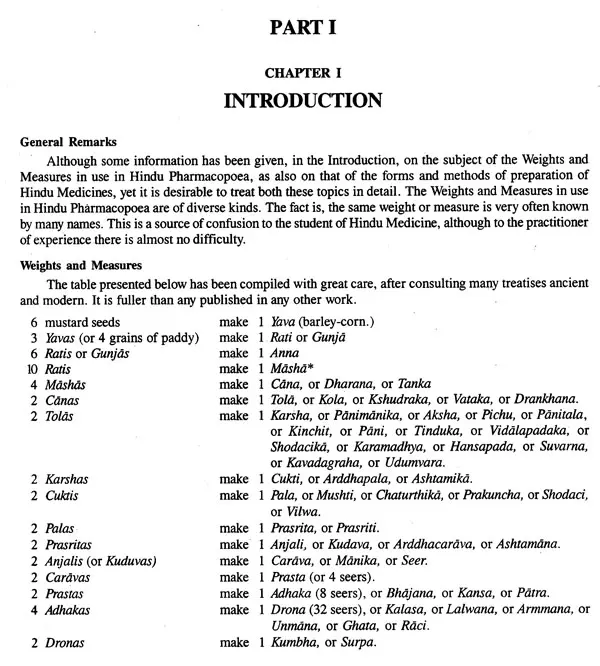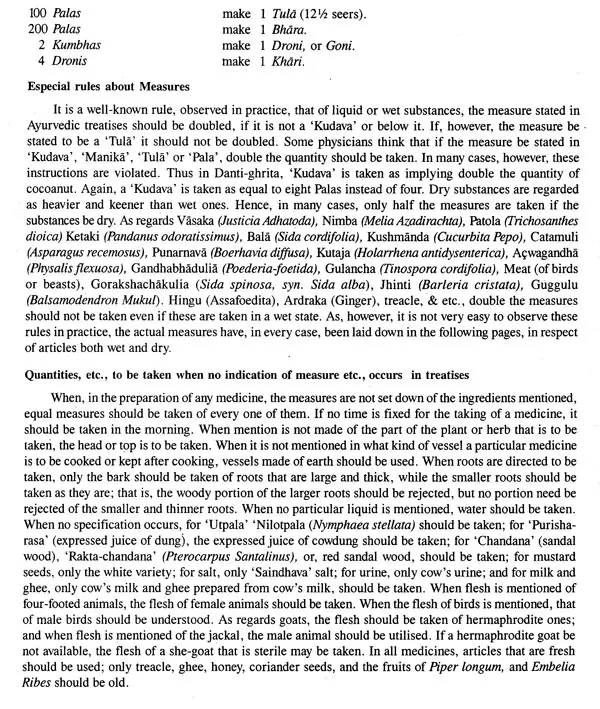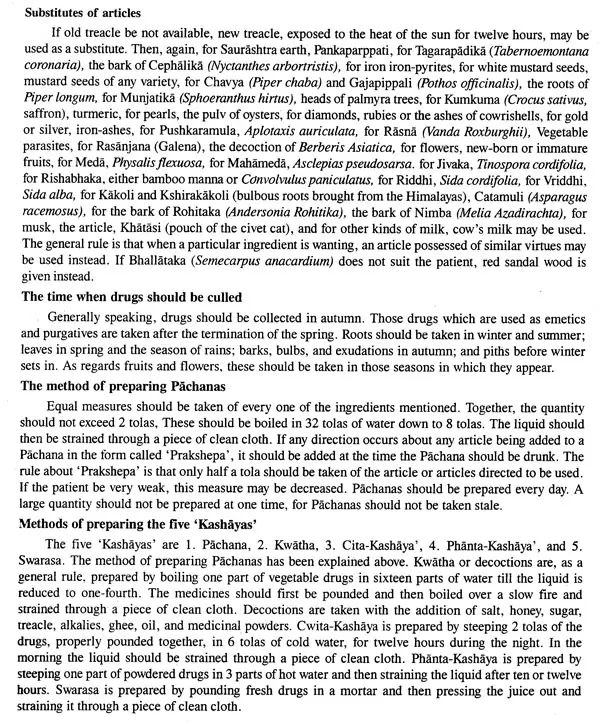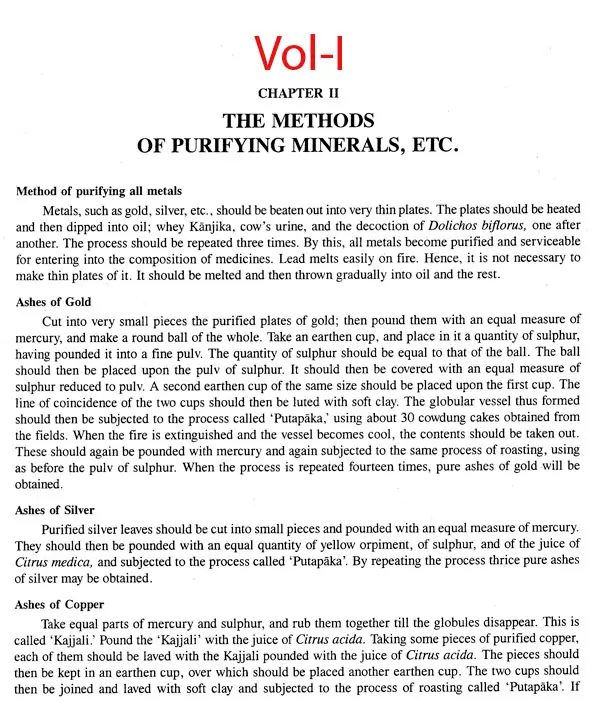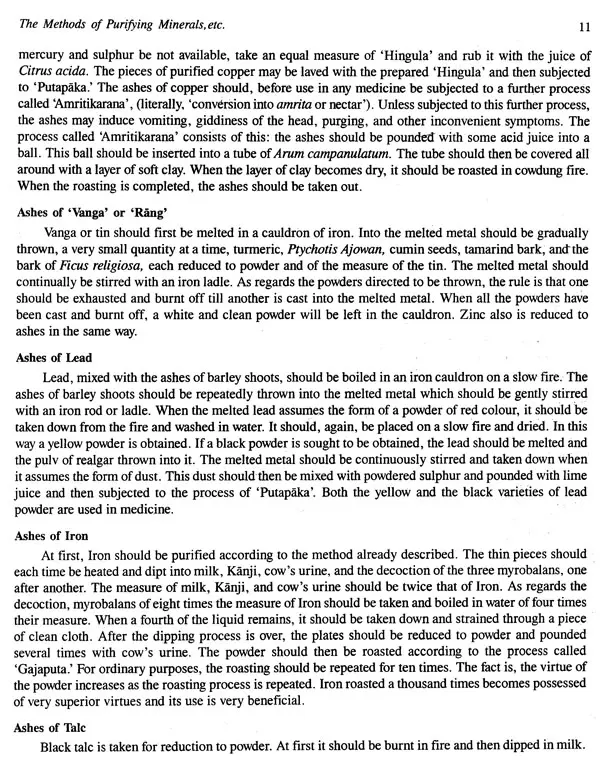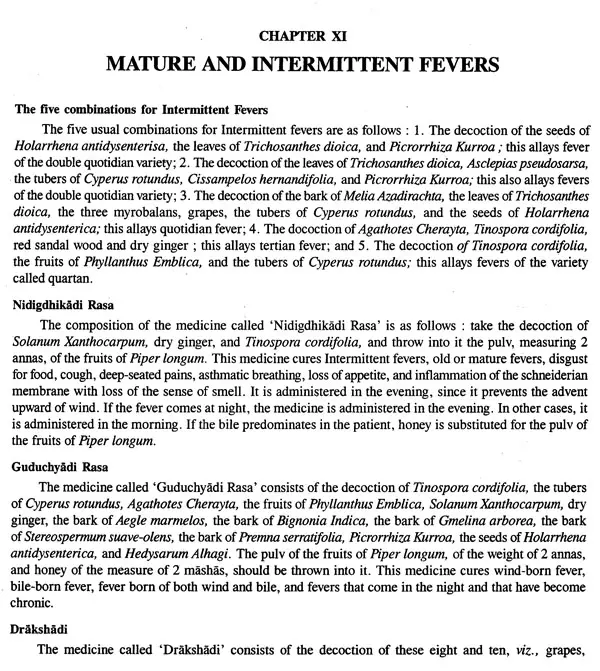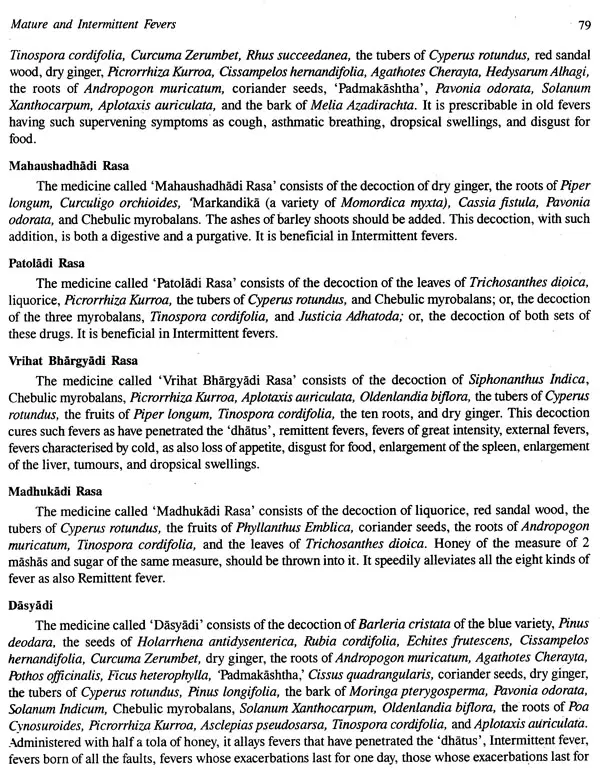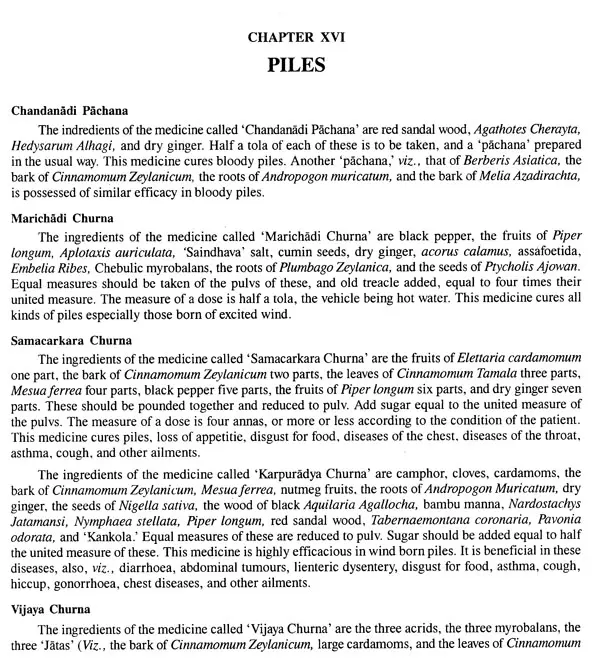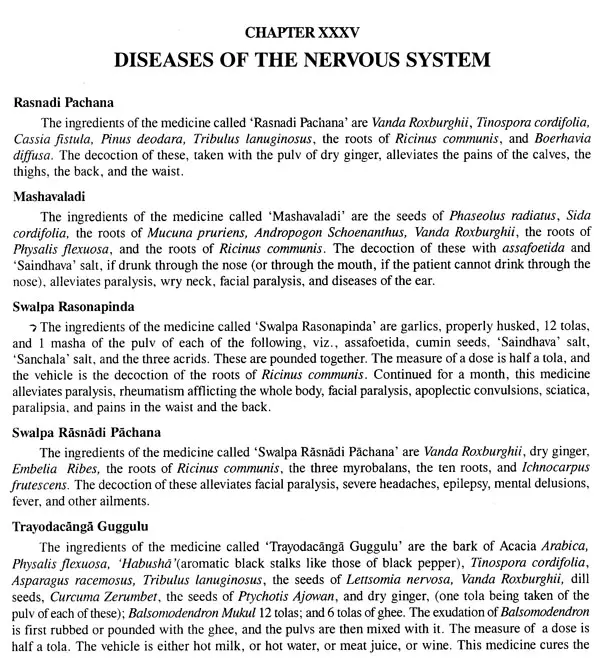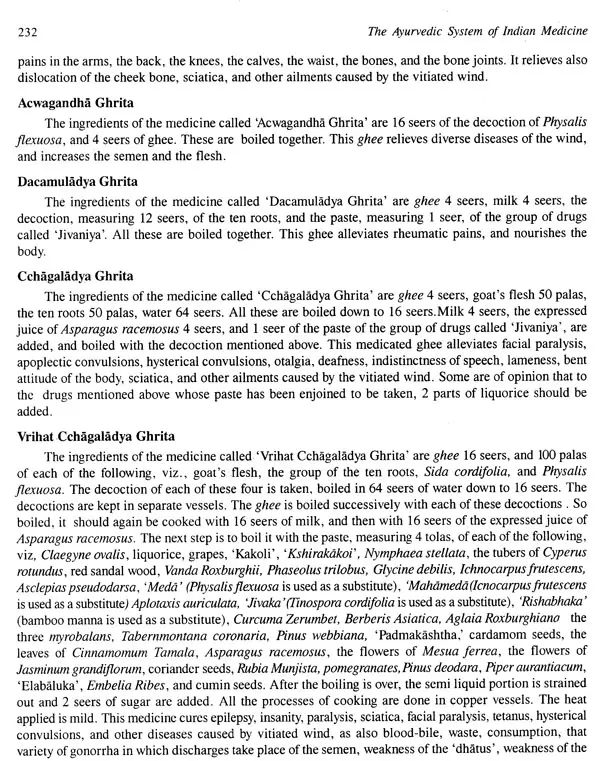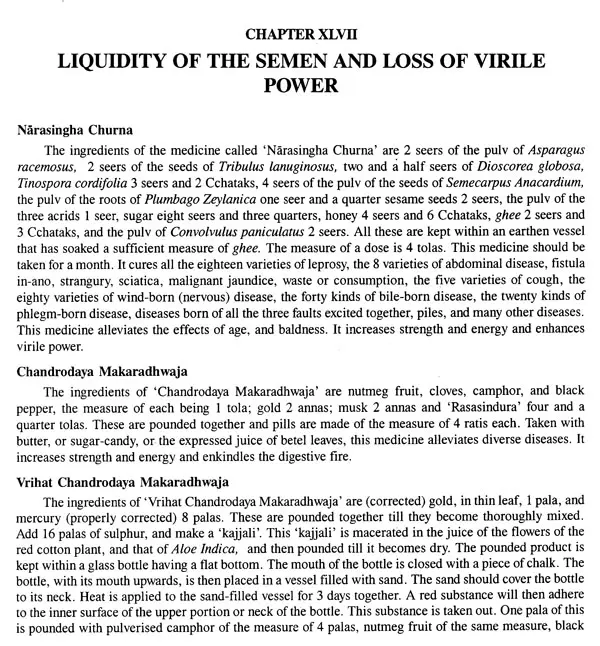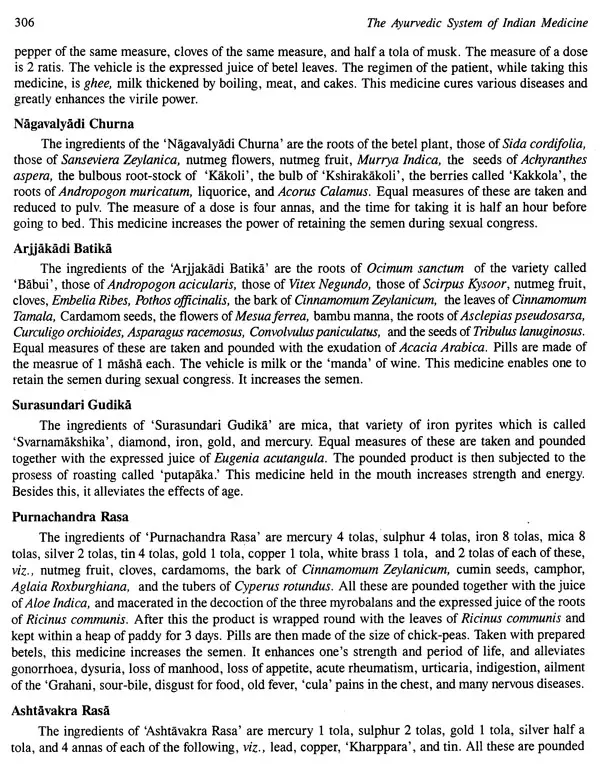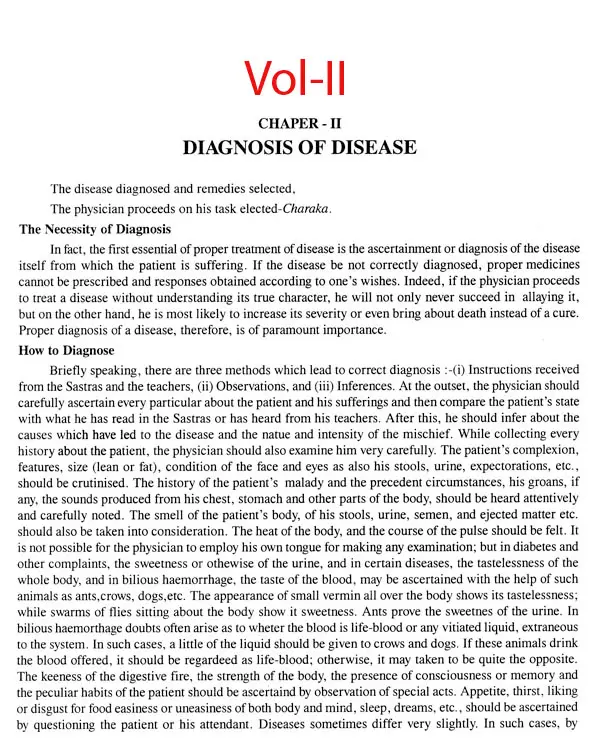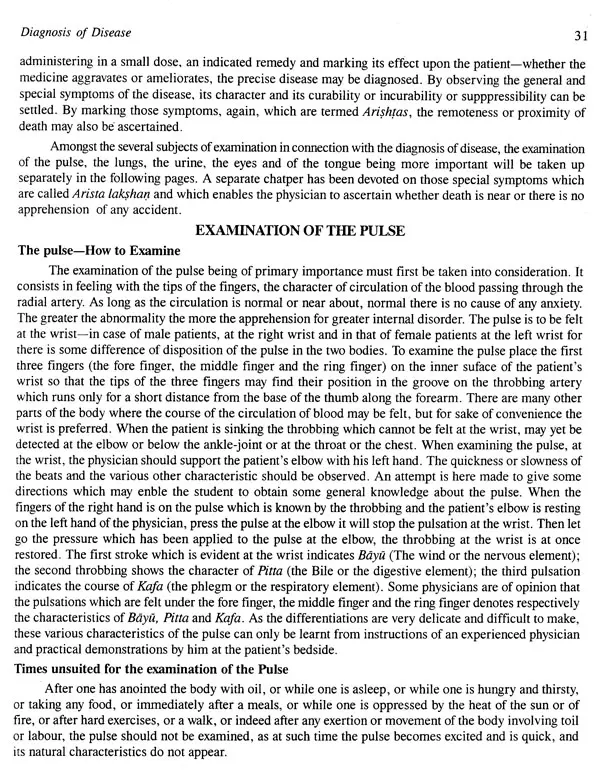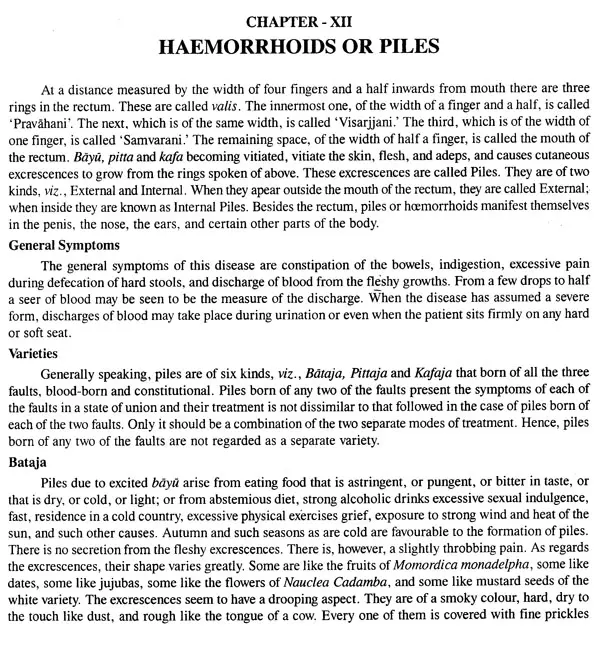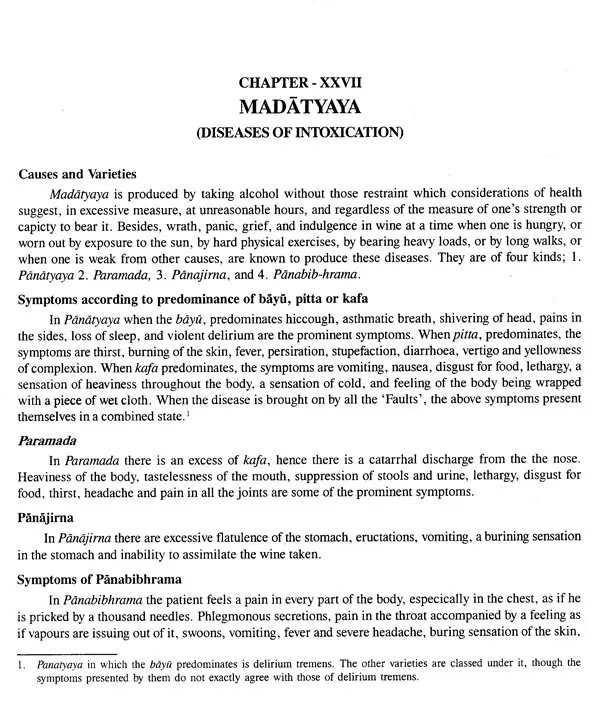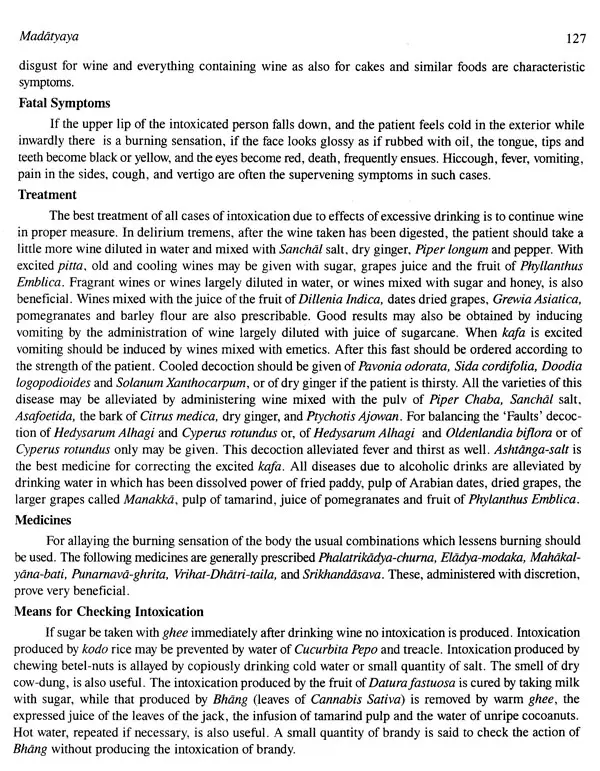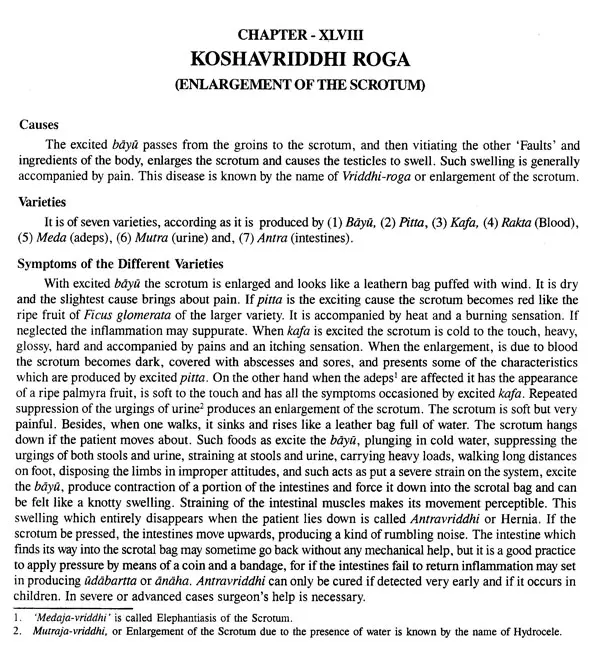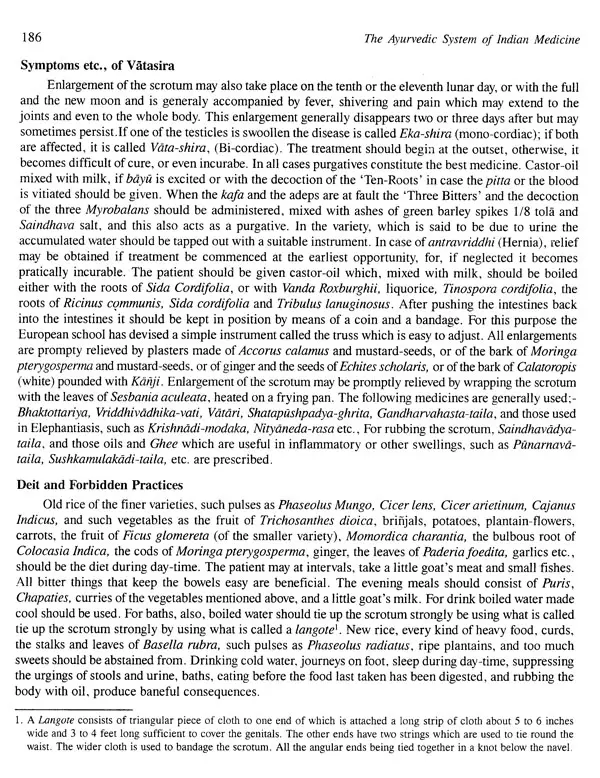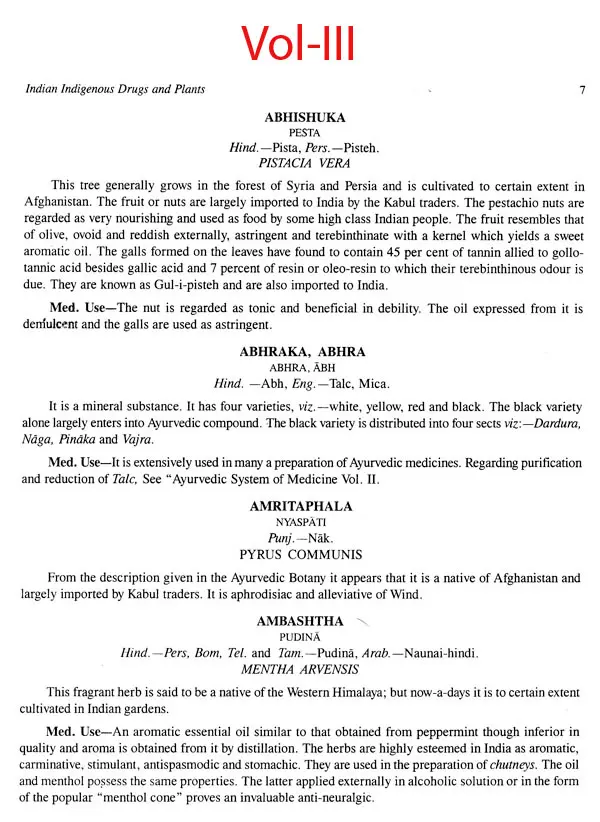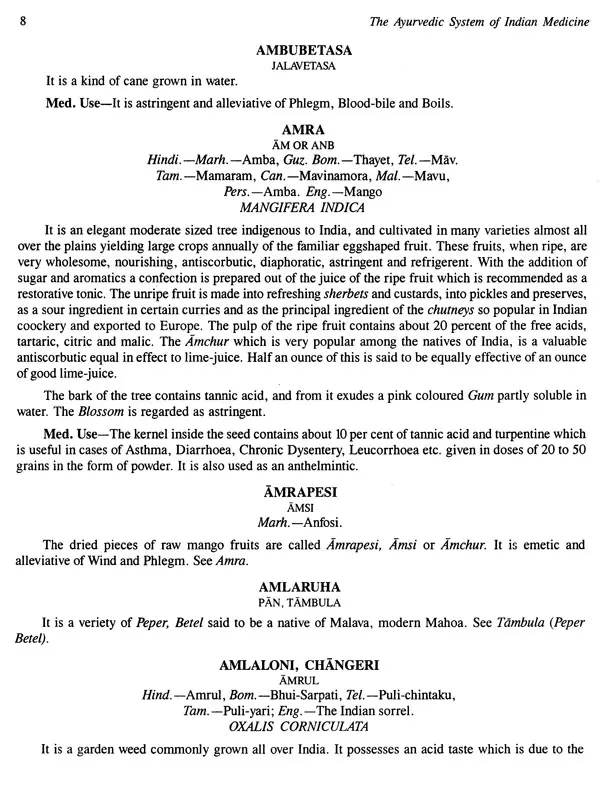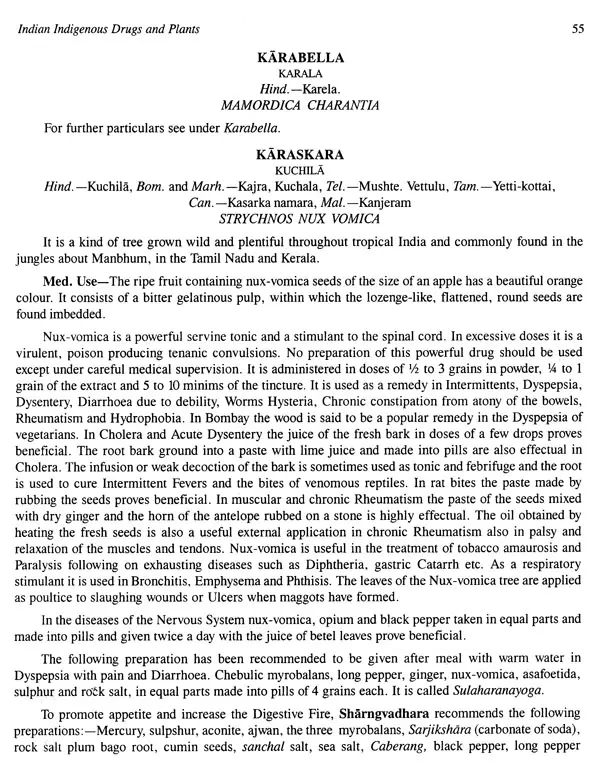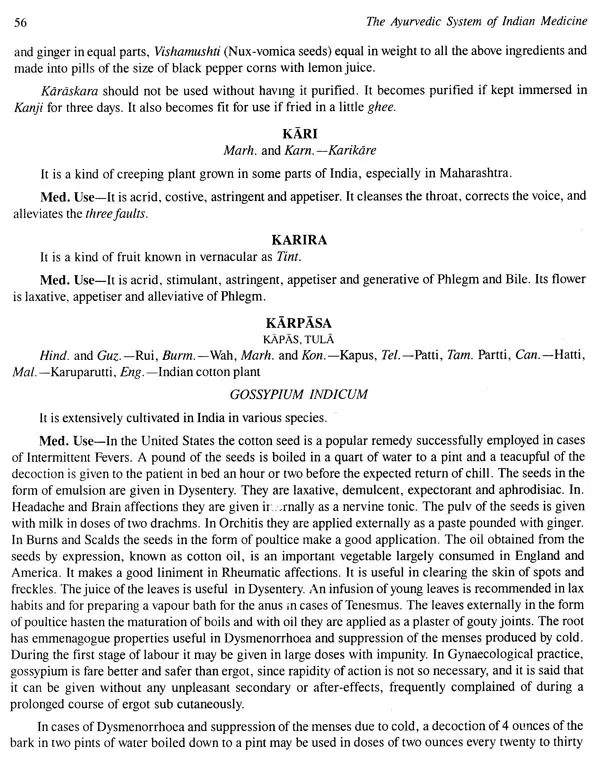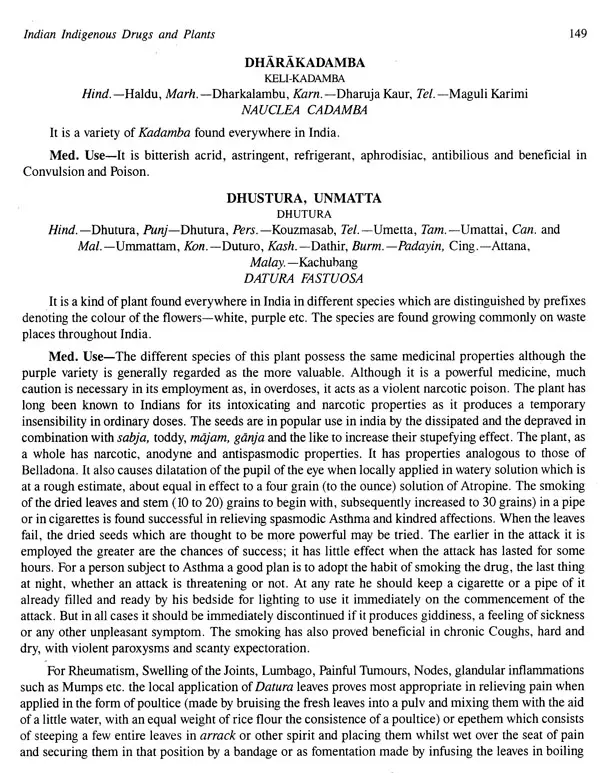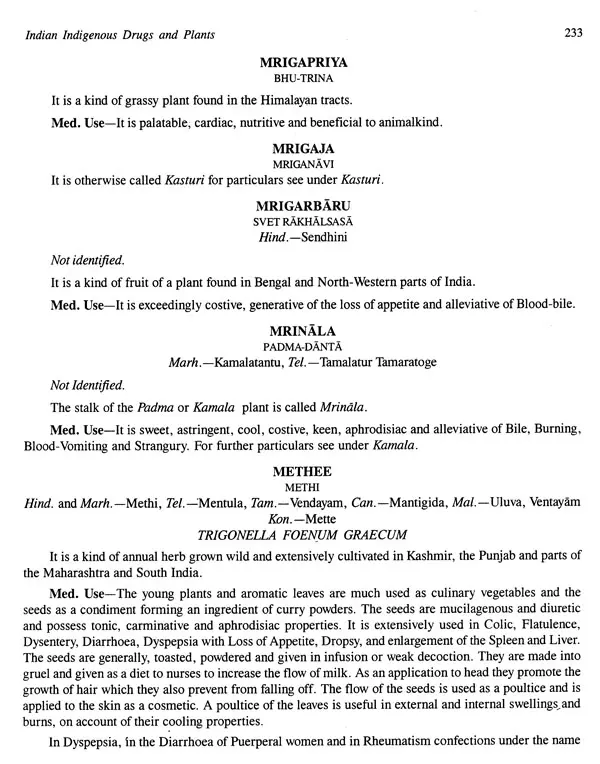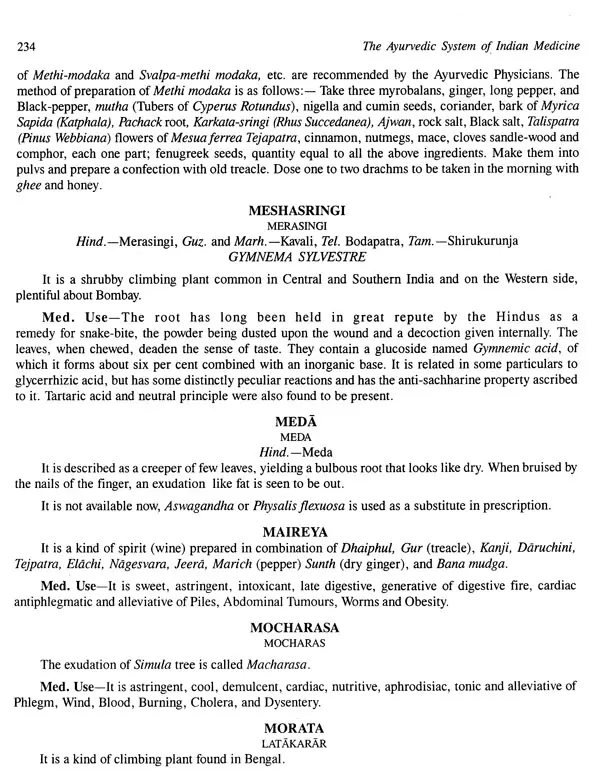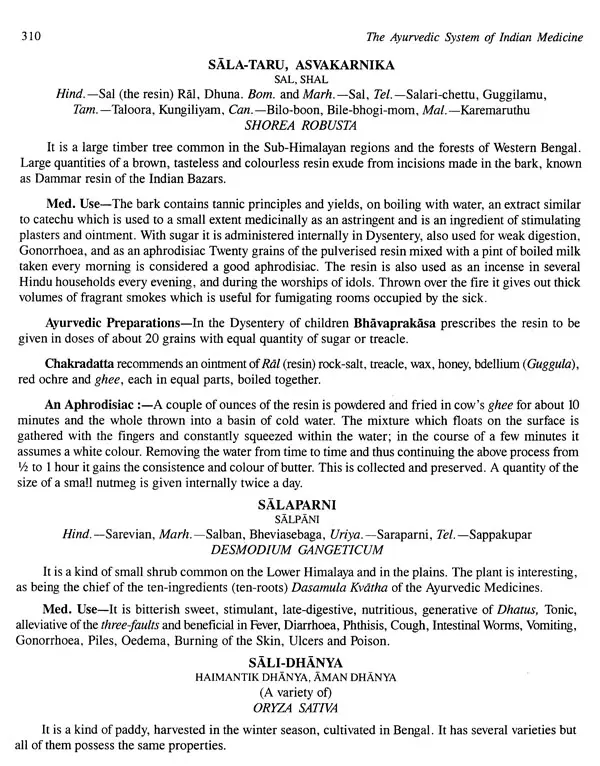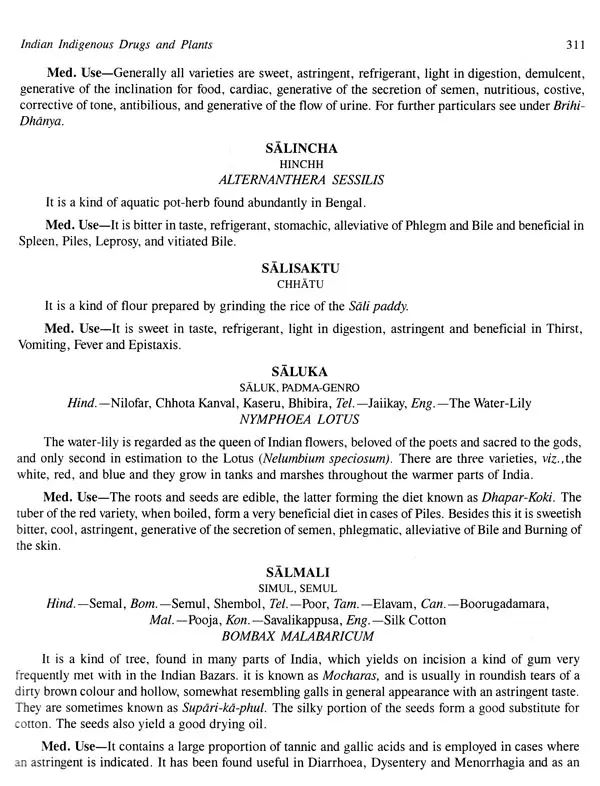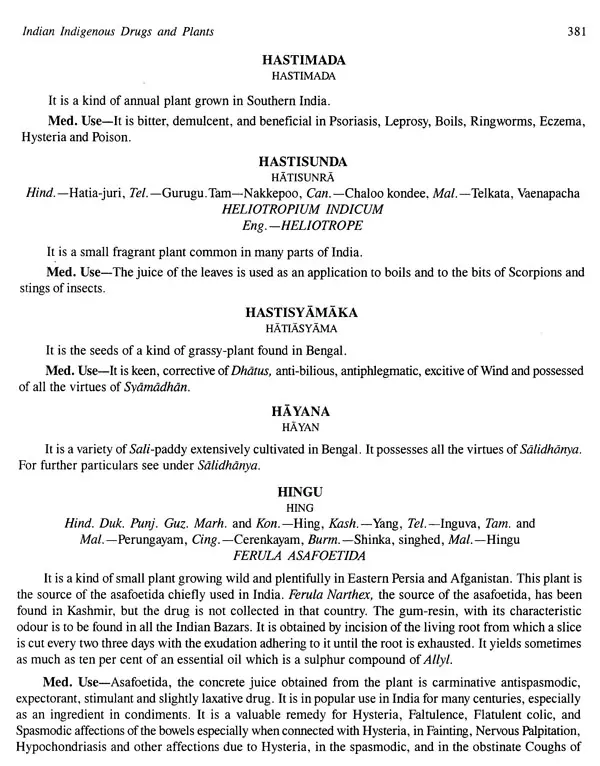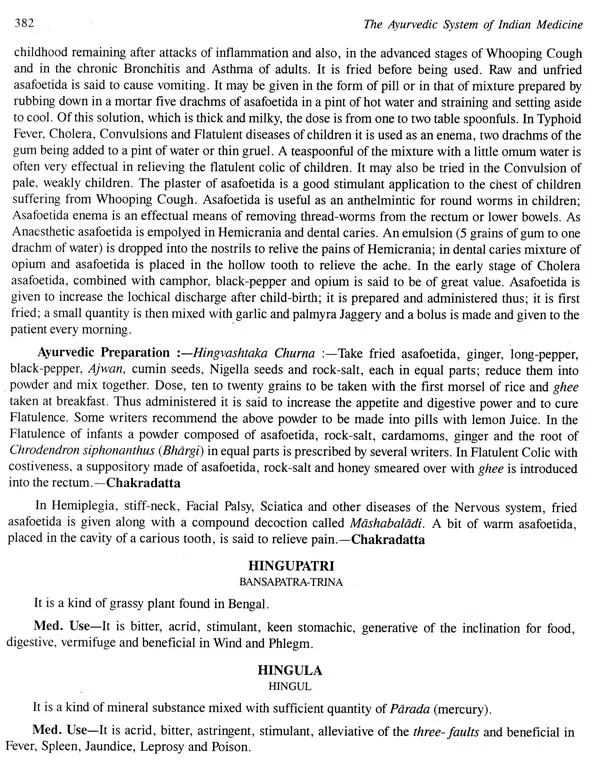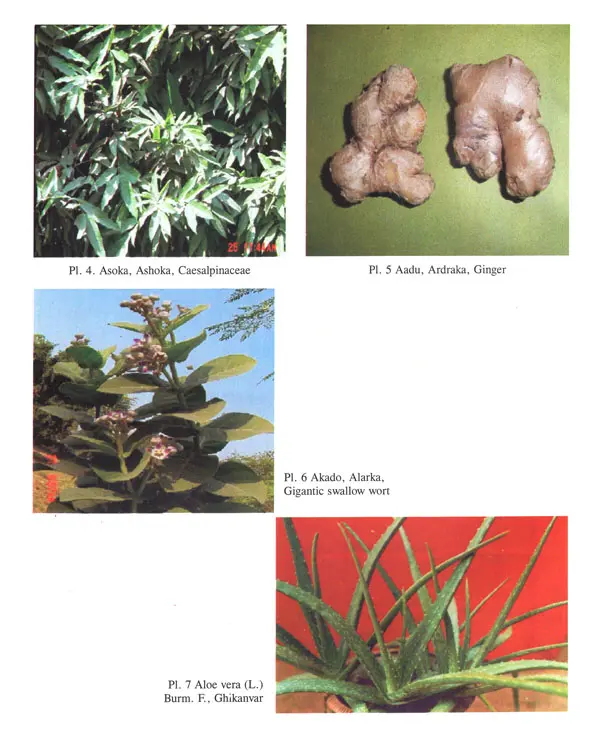
The Ayurvedic System of Indian Medicine Or An Exposition, in English, of Hindu Medicine As occuring in charak, suśruta, bagbhata and Other Authoritative Sanskrit Works, Ancient and Modern (Set of 3 Volumes)
Book Specification
| Item Code: | UAN680 |
| Author: | Kaviraj Nagendra Nath Sen Gupta and Y. T. Jasrai |
| Publisher: | Bharatiya Kala Prakashan |
| Language: | English |
| Edition: | 2006 |
| ISBN: | 818090041x |
| Pages: | 1310 (Color Illustrations) |
| Cover: | HARDCOVER |
| Other Details | 11.00 X 9.00 inch |
| Weight | 4.39 kg |
Book Description
The results of your Investigations have been a revelation to me. I had, until I read them, no idea of the high level, which the Ancient Indians had attained in the surgical treatment of diseases........ I cannot refrain from complimenting you on the wideness of your reading. You seem to be as familiar with Hippocrates and Celsus, as with Susruta and Charaka...... I used to wonder a little at the interest which Dr. Hoernle and other able men took in Indian medicine. But Dr. Hoernle's Osteology opened my eyes a little and your disquisitions have enabled me to form a wider acquaintance with the whole subject".
"The elaborate work on the "Surgical Instruments of the Hindus" evinces varied learning, diligent research and admirable skill in methodical arrangement and it will rank as a valuable contribution to Indian Medical literature".
"No one could have done greater justice to the subject. The author of such a work should combine in him a thorough knowledge of modern surgery, the critical method of the West, and a vast acquaintance with Sanskrit medical literature. It is sourcely necessary to add that in you one can readily recognise a rare and harmonious combination of all these requisite qualities".
Kaviraj Nagendra Nath Sen Gupta
was a Vernacular Licentiate in Medicine and Surgery. He was also a Member of Chemical Society (Paris), Surgical Aid Society (London), Society of Chemical Industry (London), Chemical Society (U.S.A.). He wrote so many books like: Kaviraji Siksha, Daktari-Siksha, Dravyaguna-Siksha, Susruta-Samhita, Paricharya-Siksha and Pachan-O Mustiyoga in Bengali. He was an Examiner in Hindu Medicine of Lala Banwarilal Institution, New Delhi.
Yogesh T. Jasrai,
a fellow of Indian Botanical Society, has been teaching various aspects of plant science for over seventeen years in the Department of Botany, The Maharaja Sayajirao University of Baroda. He was also conferred a prestigious Professor Hiralal Chakravarty Award in Botany (2001). He has to his credit more than 50 research papers in reputed journals and 4 books. Since 1999, Dr. Jasrai has been working as a Professor of Botany. He is also a Co-ordinator of B.Sc. Environmental Science Programme.
It would be no exaggeration to say that of all nations of the earth, the Hindus first turned their attention to the study of disease and the means of its alleviation. The Vedas are undoubtedly the most ancient of written records in the world. The Ayurveda or Science of Life is believed to have formed a part of the Vedas,viz., those that go by the name of the Atarvas. No complete text is obtainable of the Atharva Veda. Hence it is impossible to ascertain how the Science of Life was treated in it. The first great professor of Medicine coming after the age of the Atharva Veda with whom we are acquanted is Purnarvasu of the race of Atri, Atri was one of the well-begotten sons of Brahma, the Grandsire of the universe. He is regarded as one the sages through whom the Vedas were revealed. It is not known by how many degrees was Punarvasu removed from Atri. It is impossible to fix his age, even roughly. It may even be doubted whether any such person existed. He is represented as having lectured on the Science of Life unto several disciples among whom six are mentioned by name. They are Agnivesa, Bheta, Jatukarna, Parasara Harita, and Kharpani. These disciples became professors in time. Every one of them compiled a treatise on Medicine. That by Agnivesa is generally allowed to have been superior in point of merit. It is believed that Agnivesa's compilation gradually superseded the compilations of the others. At present, fragments only exist of those compilations.
The lectures of Punarvasu were probably collected together by his disciples. They must have been in prose Yet Charaka,who professes to have only revised the earlier work, gives us a version which consists of both prose and verse Charaka, indeed, calls the work as Agnivesa's Each lesson or chapter ends with a colophon stating-thus ends lesson-(here occurs the number), named-(here occurs the name in the Division called-(here the Division is named), of the treatise of Agnivesa, as revised by Charka. “The probable solution is that Punarvasu's lectures were collected and arranged by Agnivesa who accordingly came to be viewed as the author of the treatise which Charaka subsequently revised. Whoever was the author or, rather, compiler, the treatise consists of questions put by Agnivesa and others, and the answers there to of Panarvasu Some other Rishis than the six disciples of Punarvasu are mentioned as taking part in the discussions. But Punarvasu's answers are always recorded as the final deliverances on the topics. Wherever verses are introduced, they are referred to by Charaka as those of the original work The passages in prose seem tonbe abridgdments of the matter occuring in the earlier treatise. That treatise could not really be in the form of lectures. It was, on the other hand, a systematic work composed, as most works of ancient India were, in the form of questions and answers. Almost all the answers are embodied in aphorisms that are often exceedingly terse. The truth is, these aphorisms constitute only heads of discurses They are for the use of the preceptor in the lecture hall. The learning and experience of the preceptor enable him to dwell largely on them for assisting the comprehension of the pupils.
THE second volume of The Ayurvedic System of Medicine is given to the public. It consists entirely of pharmacy. The composition of the medicines used by practitioners of the Ayurvedic system of cure, and the method of their preparation, have been explained. The weight and measures in use in Hindu pharmacy the several processes of cooking, and the Yantras or arrangement of vessels and retorts, bave been set forth in the first chapter. Some of the special rules about measures have also been explained. Liquids are generally taken of double the measure mentioned. Thus, if sixty four seers be directed to be taken of water, or ghee, or oil, or of the expressed juice of medicinal plant, double the quantity, i.e., one hundred and twentyeight seers are actually taken. Most of the medicines mentioned in this volume are not new They are in use since the days of Charaka and Sucruta. Later authorities have added some. These also have been found to be as efficacious as those occurring in the ancient treatises.
Regarding medicinal herbs and plants, elaborate instructions occur in authoritative treatises about the season and place and manner of their culling. If these are not attended to, the preparations fail of effect. At least, their efficacy becomes doubtful. Amalaka, (the fruit of phyllanthus emblica) enters into the composition of many medicines. The fruits are directed to be taken not from solitary trees, but from the most vigorous tree standing in the midst of forest of Amalaka. Then, again, only those fruits that are well-developed and full grown, should be selected.
It has been said that medicinal herbs and plants and roots should generally be obtained from the Himavat mountains. It is very much to be regretted that this important direction is not generally attended to. No wonder that Ayurvedic medicines sometimes fail to produce expected results. The truth is, the inferior character of the ingredients, and defective methods of preparation, are answerable for this. Those who have the Interests of Ayurveda at heart should do their best to prepare properly the medicines upon which they rely for the cure of disease.
In preseming this Volume to the public, We do not claim originality: Ours is not the high aim of offering the scientific world a botanical work on the Indian Plants like that of Roxburgh. We dimply give the names of all Indian plants with their medicinal properties that are usful to the students of Ayurveda. We have included in the book the names of metals and a few other things that are used medicinally by Kavirajas. The usefulness of this volume is obvious. In the first and second volumes of 'Encyclopaedia of the Ayurvedic System of Indian Medicine" we have given the scientific names of medicinal plants. The Sanskrit and Vernacular names are indispensably necessary to the Indian student for easy indentification An Indian student will easily recognise a plant if both its Sanskrit and Vernacular names are known. To Europeans also they are most useful for the same purpose. We have availed of the labours of such great botanists as Linnaeus, Rexburgh. Carey, Lamark, and others Many of them worried Lifelong for the identification of the plants of India. No country, except the land of Bharata, can, perhaps boast of possessing such a large variety of vegetable creation. For the botanist this land has a peculiar fascination It is again, curious that thousands of years ago the Rishis studied almost all the plants that flourish in this country of continental proportions and discovered their medicinal properties. The very names they have given to many plans bespeak their principal characteristics. There is poetry, again in some of the names. The remark of the American essayist, Mr. Holmes, that words are fossilised poetry can nowhere be better illustrated than in the nomenclature of plants by the Rishis. To take the names of (Niladurva) for example we set its colour indicated by such names as she (Harita) and (Shyama), both meaning green; its cool touch, by a (Sheetal) and (Anushnavallika), its tuberous character (Shatamula mearing having hundred roots) are in auspicious ceremonies, by (Shiva), (Mangala) and (Jaya): its medicinal virtues by (Mahaushadhi), a highly beneficial herb. Its botanical peculiarities are indicated by such names as f (Shatagranthi meaning possessed of a hundred knots) and (Amrita which suggests its deathlessness or power of springing forth again and again). There is poetry, too in the name which suggests the idea of beautiful woman whose touch is warm in the cold season and cooling in the summer Sanskrit nomenclature of plants is thus a study for poets and scientists as well.
The theory of Health and Disease, as expounded in Hindu Medical Treatises, is easy to understand. A living creature is composed of soul, mind, and body. In the language of Punarvasu, this trinity reseth on union like three sticks standing with one another's support." The compound is called Purusha or Being. It is this compound or soul, mind, and body that is the subject-matter of the Science of Life. The soul is regarded as immutable. It is incapable of being affected by anything. It is eternal. It is regarded as the witness, for it views all things without being itself affected by anything. The body, like all other material objects. has for its constituent elements the five primordial essences viz., earth, water, fire, air, and ether These exist in the shape of juices, blood, flesh, bones, adeps, marrow, semen and ojas. United with the senses or the instruments by which the mind acts, the compound is called animate. Without them, it is inanimate.
Body and mind are the subjects to which Health and Disease inhere. When the constituent ingredients of the body are in their normal condition, the body is said to be in Health. When the functions of the mind are in their normal condition, and mind is said to be in Health. When the normal condition of both the body and the mind is disturbed, the result is Disease.
"Of all diseases, physical and mental" (to use the language of Punarvasu), "the causes, in brief, are three, viz., adverse correlation, absence of correlation, and excessive correlation, of Time, Mind, and the objects of the senses." Time is of two kinds, viz., that which we divide into seasons, months, fortnights, weeks, days, etc, and that which is concerned with the age of man and which we divide into infancy, youth, manhood and decrepitude. Time, mind, and the objects of the senses have relations with each other and one another. When the harmony of these relations is disturbed, the result is disease. A person in a certain season or a certain age may do that with impunity which in another season or another age may be productive of harm. In this case there occurs an adverse correlation or excessive correlation between time and the objects of sense. The eye exists for seeing, the car for hearing. If one, however, keeps one's eyes directed to gaudy or blazing colours for a long time, or hears loud and disagreeable noises for hours together, the result is injury to thse organs of sense. There happens in these cases, an excess of correlation between the eye or the car and its object. If, again one keeps one's eyes continually shut the result is a weakening of vision or an incapacity to bear the light. In such cases there is what we say m absence of correlation between the eye and its object, the mind by dwelling too long and too closely on a particular object, may become deranged. This would be called an instance of excess of correlation between the mind and object. Thus, in respect of time, of mind, and of the objects of the senses, excess of correlation, or the entire absence of correlation, or adverse correlation, are causes of disease both mental and bodily Fault of judgement or understanding is the sole cause of these abnormal correlations soundness of the understanding keeps them at a distance.
**Contents and Sample Pages**
